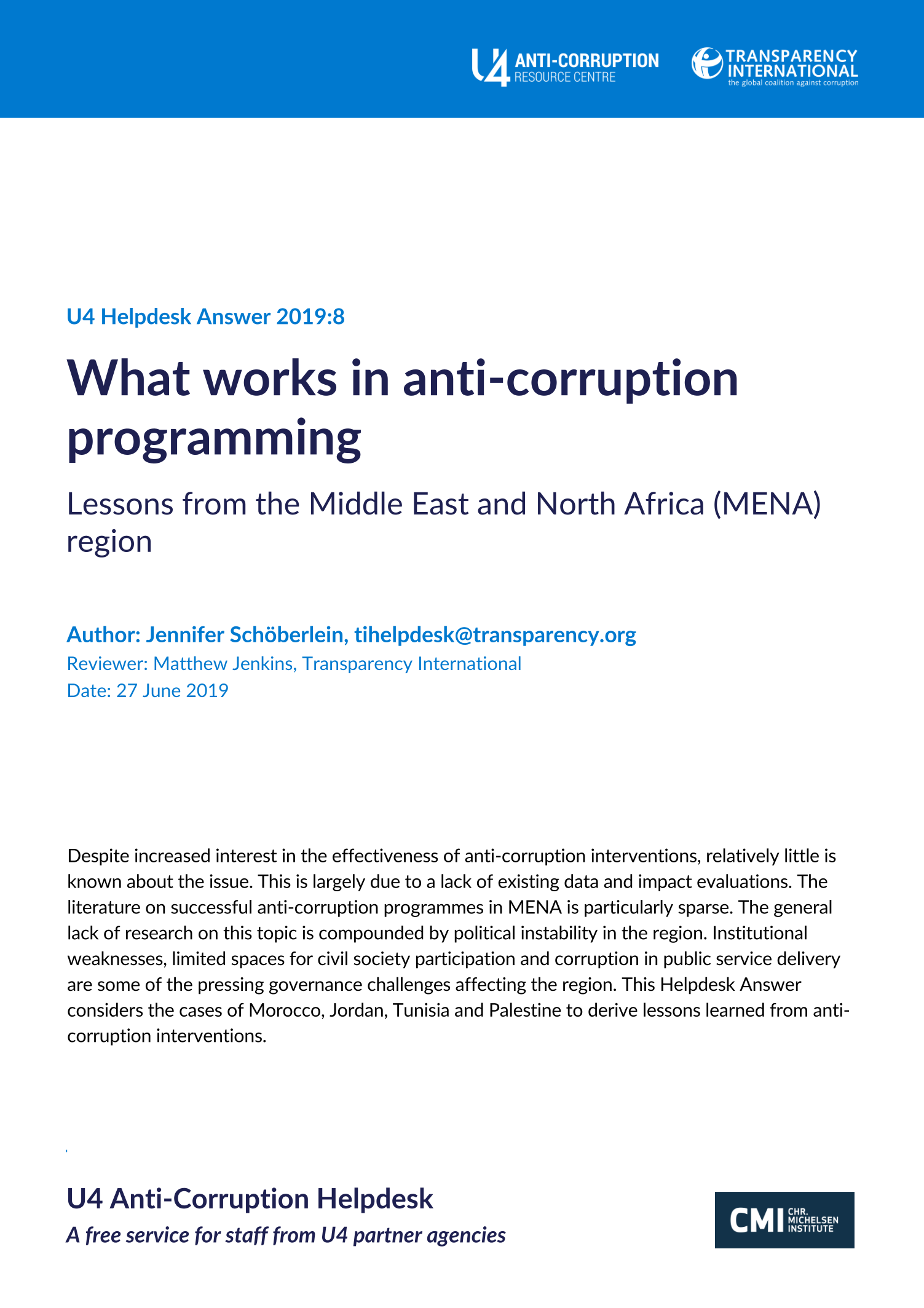Main points
- Impact indicators and monitoring approaches need to be integrated into anti-corruption programming to measure effectiveness.
- The current political crises in the MENA region often obstruct effective implementation of anti-corruption measures and their evaluation.
- Some countries in the region (such as Jordan, Tunisia, Morocco and Palestine) have embarked on reform processes, but results so far have been mixed.
- Some countries in the region (such as Jordan, Tunisia, Morocco and Palestine) have embarked on reform processes, but results so far have been mixed.



